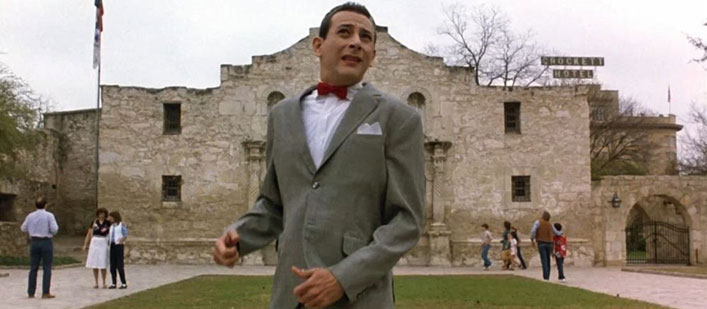Texas: The Only State to Commit Treason in Defense of Slavery Twice

Those of you who are very old on the internets remember that right-wing hack Josh Trevino, former Bush speechwriter and then who ran the Tacitus blog. He was discredited after it turned out he was a paid agent of Malaysia and then openly called for the murder of Americans who defended Palestinians. I think he’s somewhere in the wingnut welfare world today. Anyway, back in the olden days of yore, one of the first time people got super made at me on the internets was when I used to blog about how Texas was the only state to commit treason in defense of slavery twice. This absolutely infuriated Trevino, who would say I was the worst historian in the country and the like. He was sure that the Texas Revolution was all about rights and had nothing to do with white supremacy. This was, of course, insane. I mean, even if you take out slavery as part of it, which would make no sense since that was the whole point of what happened in 1836, the leading Tejano supporters of the Texas Revolution were in exile back in Mexico by the late 1830s once they started standing up for the rights of fellow Mexicans now in Texas. Anyway, I’ve always had the right enemies and Trevino’s fury made me laugh.
I thought about all this for the first time in awhile when reading this story about the tremendously flawed popular understanding of The Alamo, which completely erases slavery from the narrative, even to the point of the claim that the Mexicans killed everyone inside. This was not true, for there were slaves inside and not only were they not killed, they were freed.
Yet, the legend of the Alamo is a Texas tall tale run amok. The actual story is one of White American immigrants to Texas revolting in large part over Mexican attempts to end slavery. Far from heroically fighting for a noble cause, they fought to defend the most odious of practices. Our newfound understanding of this history presents Americans with a long-overlooked opportunity to correct a racist myth surrounding this monument.
Anglo settlers began arriving in Texas from the United States in the 1820s, when it was part of Spanish Mexico.The Spanish government wanted them as a bulwark against the Comanche, but these new Texans had another agenda. They wanted to take advantage of thousands of acres of land in the Brazos River Valley that was available cheap for White settlers, some of which was used to cultivate cotton.
When these dichotomous visions became clear in 1822, a newly independent Mexican government in Mexico City paused further settlement. The problem, according to Stephen F. Austin, known as the “Father of Texas,” was that the new government, which took power on a racial equality agenda, would not abide slavery.
The Mexican government’s efforts to write a new federal constitution got bogged down. One of the sticking points was the question of slavery. The new government wanted slavery gone, but ending the practice would ruin the settlers. Austin, “talked to each individual member of the junta of the necessity which existed in Texas … for the new colonists to bring their slaves.”
And the Mexican government couldn’t just ignore their whims. The Anglo settlers were increasingly taking over the place and could, if their numbers increased sufficiently, break Texas off from Mexico and join the United States, which, of course, eventually happened.
So the Mexican government struck a deal with Austin. The deal allowed settlers to keep their enslaved people but banned any further trade. Enslavement took root, and in 1823, Austin received permission to increase immigration from the United States.
But constant turnover and instability in Mexico City proved problematic for the Texans. In 1824, a new government proposed measures to undo the understanding over slavery. One bill outlawed “commerce and traffic in slaves” and stated that any enslaved person brought into Mexico would be deemed free by “the mere act of treading Mexican soil.”
Potential settlers noticed. One prospective settler from Mississippi noted that the only thing preventing “wealthy planters from emigrating immediately to the province of Texas,” was the “uncertainty now prevailing” over slavery. And from Alabama came a similar message: “Our most valuable inhabitants here own negroes. … Our planters are not willing to remove without they can first be assured of their being secured to them by the laws of your Govt.” Economic opportunity made Texas alluring for cotton growers, but the political uncertainty made them hesitate. Their hesitation, in turn, increased pressure on Mexican lawmakers, who wanted to maintain control of Texas, and on Austin, whose livelihood depended on getting more people to immigrate.
Finally, in 1824, a new Mexican constitution seemed to settle the issue by leaving the slavery question to the states. The locus of Austin’s anxiety shifted to Saltillo, the capital of the Mexican state of Coahuila, to which the Texas territory belonged. The state constitution of 1827 allowed settlers to import enslaved people for six more months. That September, however, yet another new government in Mexico City passed a flurry of laws curbing slavery.
By 1828, Texans had settled on an unsustainable practice: They would ignore anti-slavery laws passed in Mexico City.
Don’t tell Texas Republicans this. It must be Critical Race Theory! For that matter, better not tell Phil Collins either…..


